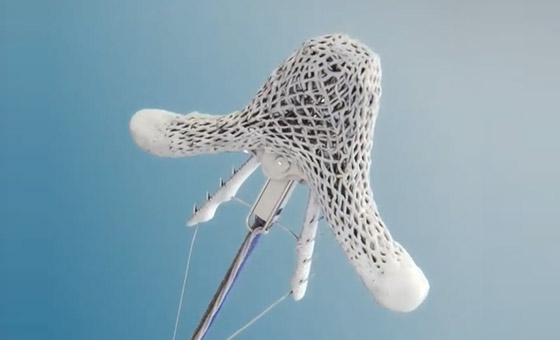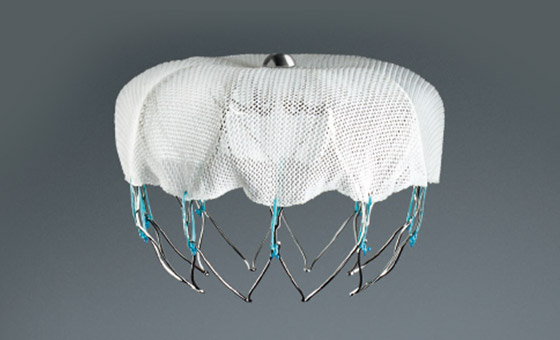弁膜症治療センター
低侵襲治療のトップランナーとして、
一人ひとりに最適な治療をご用意しています。
動悸・息切れ・疲れやすい
心臓弁膜症の自覚症状が強くなる前に、弁膜症治療センターに相談を。
心臓弁膜症は心臓にある4つの弁のどこかに障害が起こり、本来の働きを果たせなくなった状態です。弁の障害が強くなると心臓は全身に十分な血液を送ることができなくなり、心不全に陥ります。主な症状は「息切れ」「動悸」「胸痛」「だるさ」「むくみ」です。中には自覚症状に乏しく、診察時の聴診による心雑音や心電図異常がきっかけで受診される方もいます。
弁膜症治療センターでは、そうした患者さんに対し外来でまず検査を行い、心不全の度合いや弁膜症の有無を診断します。弁膜症と分かれば、①お薬の調整、②カテーテル治療、③心臓手術のうち、患者さんに合った治療法を選び、説明いたします。当院は心臓弁膜症に対する幅広い治療メニューがあるだけでなく、糖尿病やがんなどの持病を抱えた方でも、総合病院のメリットを生かし幅広くサポートいたします。
ニュース
- 2025年01月31日
当院初の頸動脈アプローチによるTAVIを施行しました。 - 2025年01月24日
国内第3の生体弁Navitorを使用したTAVIを開始しました。 - 2024年12月24日
循環器内科 深川医師がTAVR実施医SAPIENシリーズを取得しました。 - 2024年12月21日
循環器内科 山口医師が心血管カテーテル治療専門医(CVIT専門医)を取得しました。 - 2024年12月17日
循環器内科 山口医師がTAVI指導医CoreValveシリーズを取得しました。 - 2024年12月12日
循環器内科 深川医師が日本周術期経食道心エコー(JB-POT)認定医を取得しました。 - 2024年07月21日
循環器内科 山口医師がTAVI指導医SAPIENシリーズを取得しました。 - 2024年05月31日
当院で施行したTAVIが600症例を突破しました。
豊富な治療選択肢
経カテーテル大動脈弁留置術
TAVI(タビ)はTranscatheter Aortic Valve Implantationの略で、重症の大動脈弁狭窄症に対する治療法です。大腿動脈や鎖骨下動脈または心尖からカテーテルを血管内に入れ、折り畳まれた人工弁を心臓まで運び、大動脈弁に人工弁を留置します。留置した直後から、TAVIの弁は患者さんの弁として機能します。当院は日本経カテーテル心臓弁治療学会(JTVT)によるTAVR専門施設(全国 38施設、2021年8月現在)のひとつです。

体の負担が少なく、ご高齢の方も対象に
従来の外科手術と異なり人工心肺を使用しなくて済むことから、患者さんの体への負担が少なく、ご高齢の方や体力のない方でも適応可能です。

TAVIの効果は証明されています
TAVIの臨床成績については、様々な国や地域において大規模な臨床研究がなされており、有効性、安全性、生活の質の改善などにおいて、長期的にも良好な結果が得られています。外科的弁置換術と比較しても良好な成績を残しています。
対象となる大動脈弁狭窄症の患者さん
これは適応患者像をイメージしていただくための例示であり、実在の患者さんの症例ではありません

Case-178歳 男性
- 職業
- 定年退職者 孫と遊ぶのが趣味
- 病状
- 狭心症(バイパス手術歴)、糖尿病、高血圧
10年以上前に狭心症に対してバイパス手術歴があり、糖尿病、高血圧で通院中の男性です。最近、孫と遊んでいて息切れが強く、走って追いつけなくなったとおっしゃっています。外来で行った検査では重症大動脈弁狭窄症と診断されました。2回目の心臓手術に不安があり、カテーテル治療を希望されています。
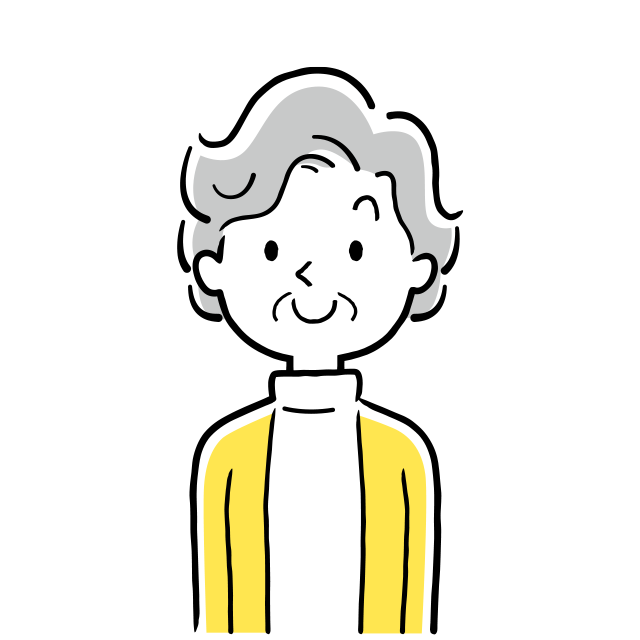
Case-288歳 女性
- 職業
- 主婦
- 病状
- 狭心症
高血圧で通院中です。最近息切れがひどくなり、動いた後に胸部が締め付けられる感覚があったとおっしゃっています。外来の心エコー検査では重症大動脈弁狭窄症と診断され、さらにCTでは冠動脈にも狭窄が認められました。
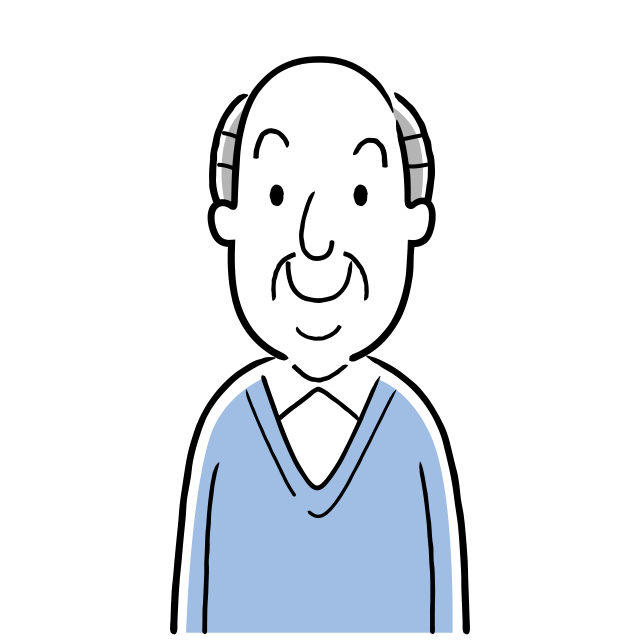
Case-381歳 男性
- 職業
- 定年退職者 犬との散歩が日課
- 病状
- 重症大動脈弁狭窄症、整形外科手術予定
数年前から散歩中に息切れがありましたが年のせいだと思っていました。今回、整形外科手術前の診察で心臓の音がおかしいということで、心エコー検査を行ったところ、心機能は低下しており、重症大動脈弁狭窄症と診断されました。
経皮的僧帽弁接合不全修復システム
重症の僧帽弁閉鎖不全症の患者さんで、外科手術がハイリスクとされていた方に対する治療法です。カテーテル先端にあるクリップで僧帽弁の弁尖を留め、逆流を軽減することにより僧帽弁閉鎖不全症の改善を図ります。これまで心臓機能が弱っていて外科手術の恩恵を受けられなかった患者さんにも適しています。

外科手術に比べて低侵襲で、回復が早く、入院期間も短い
MitraClip(マイトラクリップ)は止血しやすい大腿静脈からカテーテルを入れるため、手術による切り傷も残らず、出血の合併症が少ないのも魅力のひとつです。

心不全に合併する機能性僧帽弁逆流に効果
症状がよくならず入退院を繰り返す、心機能の低下した心不全患者さんに、機能性僧帽弁逆流症(FMR)が合併している場合があります。MitraClipはそのような患者さんに対して、薬物療法と比較し、生命予後や生活の質の改善効果が臨床試験で証明されています。
対象となる僧帽弁逆流症の患者さん
これは適応患者像をイメージしていただくための例示であり、実在の患者さんの症例ではありません
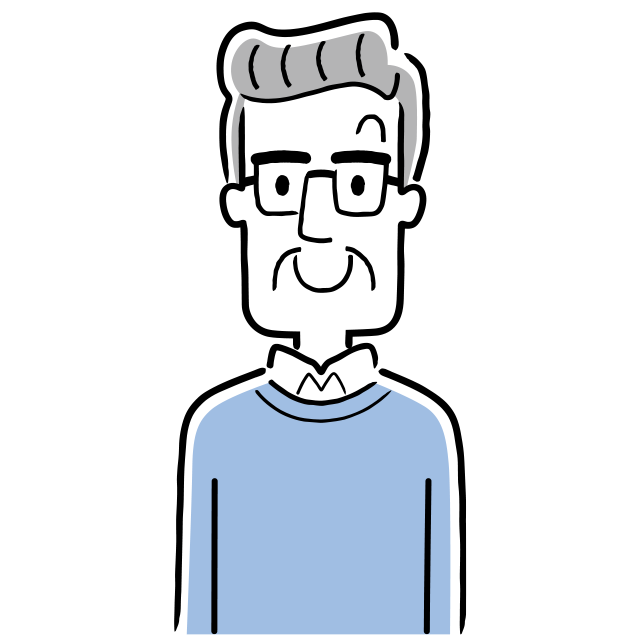
Case-173歳 男性
- 職業
- 定年退職者 ゲートボールが趣味
- 病状
- 慢性心不全
65歳の時に心筋梗塞を患い、冠動脈バイパス手術歴があります。その後は慢性心不全、慢性腎臓病として、お薬を内服していました。数年前からゲートボール中に息切れが出てきたため、心エコー検査を受けたところ、左室機能がLVEF 35 %と極端に低下し、機能性僧帽弁逆流症(FMR)が重度と診断されました。

Case-277歳 男性
- 職業
- 定年退職者 散歩が日課
- 病状
- 慢性心不全
散歩が日課の男性です。慢性心不全として、ペースメーカ療法である心室再同期療法(CRTD)を数年前に受けました。最近はまた息切れが強くなってきたため、外来で心エコーを行ったところLVEF 24%と極端に左室機能が低下してきており、機能性僧帽弁逆流症(FMR)も重度であると担当医から説明を受けました。

Case-387歳 女性
- 職業
- 定年退職者 主婦
- 病状
- 慢性心不全
最近、家事中や階段でも息切れがひどくなり、足もむくんできたたため、病院を受診しました。心エコー検査を受けたところ、器質的僧帽弁逆流症(DMR)が重症と診断を受け、胸部レントゲンでも胸水貯留を認めたため、入院となりました。高齢で最近は足腰も弱ってきており、心臓手術に不安があり、できればカテーテル治療を希望されています。
左心耳閉鎖術
心房細動は、左房前方に位置する左心耳というポケットに生じた血栓により塞栓症が生じ、脳卒中の大きな原因となっております。今まではこれを予防するため、抗凝固療法(ワルファリン、直接抗凝固療法DOAC)が唯一の治療法でした。しかし出血の副作用があり、継続が困難になることがしばしばあることが問題となっていました。この問題を解決すべく2019年9月より本邦でも保険償還された経皮的左心耳閉鎖システム: WATCHMANは、物理的に左心耳を閉鎖し、抗凝固療法を中止しても、脳卒中の予防ができる画期的なデバイスです。

心房細動のさらさら薬(抗凝固薬)内服中で、出血にお困りの方
繰り返す下血や鼻出血、血尿、皮下出血、胃潰瘍や憩室出血、脳出血の入院歴、転倒による出血などで、抗凝固薬を中止したいが中止すると脳梗塞になる危険が高くジレンマに陥っている方に対し、WATCHMANは、一回限りの低侵襲治療で、長期間の抗凝固薬の服薬による出血のリスクと、抗凝固薬中止による脳梗塞のリスクを同時に低減できます。

世界中で5万例を超える治療実績
WATCHMAはワーファリンと比較し、大きな出血性合併症を72%、後遺症を伴ったり致死的な脳卒中を55%、全死亡率を27% 減少させることが臨床研究で分かっています。一方、手技による安全性(合併症発生率は1.5%程度)も報告されています。
対象となる非弁膜症心房細動の患者さん
これは適応患者像をイメージしていただくための例示であり、実在の患者さんの症例ではありません
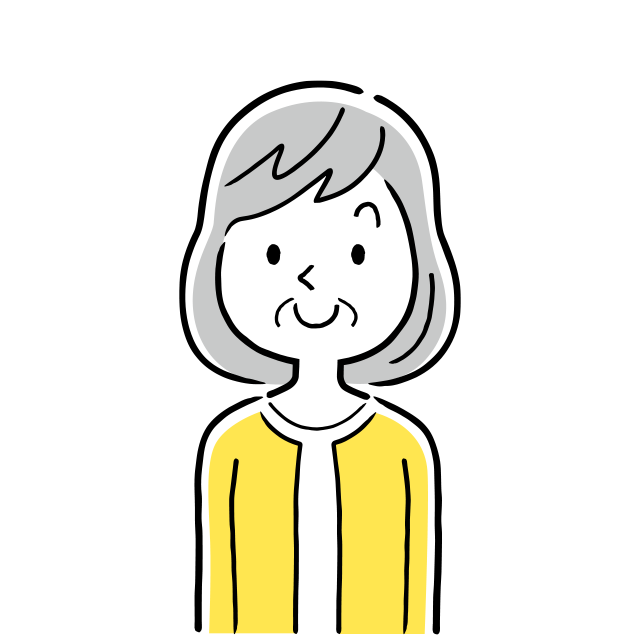
Case-168歳 女性
- 職業
- 定年退職者、ボランティア
- 病状
- 高血圧、消化管出血
ワルファリン5mgを服用しているが、過去に抗凝固療法による重篤な消化管出血を経験し、今現在も出血に悩んでいる。
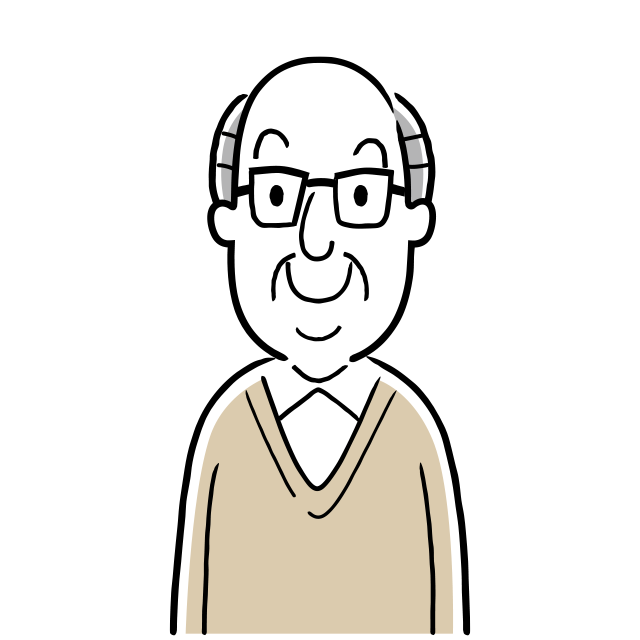
Case-280歳 男性
- 職業
- よく孫の世話をする祖父
- 病状
- うっ血性心不全、高血圧、糖尿病
現在、抗凝固薬であるリバーロキサバン15mg/日を内服している。転倒による股関節骨折および脳挫傷の既往がある。担当医は外傷による二次性の大出血リスクが高くなっていると考えている。

Case-372歳 女性
- 職業
- 定年退職者、飛行機で飛び回っている
- 病状
- 高血圧、PCI歴(ステント留置)
過去に冠動脈疾患によるPCI歴があり、ステント留置を行ったことで、現在、抗血小板薬を2剤服用している。そのため、担当医は抗凝固薬との併用で出血リスクが高いと考えている。
外来担当医のご紹介
Doctor info.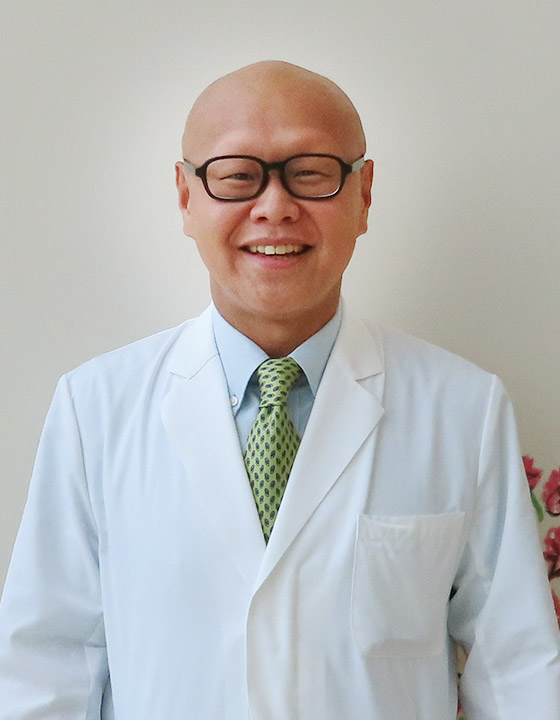
外科責任者
心臓血管外科 部長
飯田 泰功いいだやすのり
- 外来日
- 火曜 8:30 ~ 11:00
我々は、ハートチームの一員として循環器内科医、麻酔科医、臨床工学技士、手術室スタッフとカンファレンスを行い、「ムリ、ムラ、ムダ」が無く、患者さんが「腑に落ちて」治療を受けてもらえるような治療戦略を立てて参ります。
私は、平素から患者さんを「家族」と思って診療するように心掛けています。家族のためと考えれば、日々の努力、研鑚を怠らず、高いパフォーマンスを発揮できると信じています。
近年、外科手術はますます高齢でかつ脆弱な患者さんを診させていただく機会が増えています。東部病院には一つの治療法だけでなく、選択肢が多くあります。今後もチーム一丸となって患者さんの治療に全力を尽くす所存です。
- 学会専門医・認定医
- 博士(医学)
- 3学会構成心臓血管外科専門医認定機構 心臓血管外科専門医・修練指導医
- 日本外科学会認定医・専門医・指導医
- 日本脈管学会専門医
- 日本血管外科学会血管内治療医
- 浅大腿動脈ステントグラフト実施医
- 胸部・腹部ステントグラフト指導医
- 慶應義塾大学医学部客員講師
- 経カテーテル的大動脈弁置換術(TAVI)SAPIENシリーズ実施医
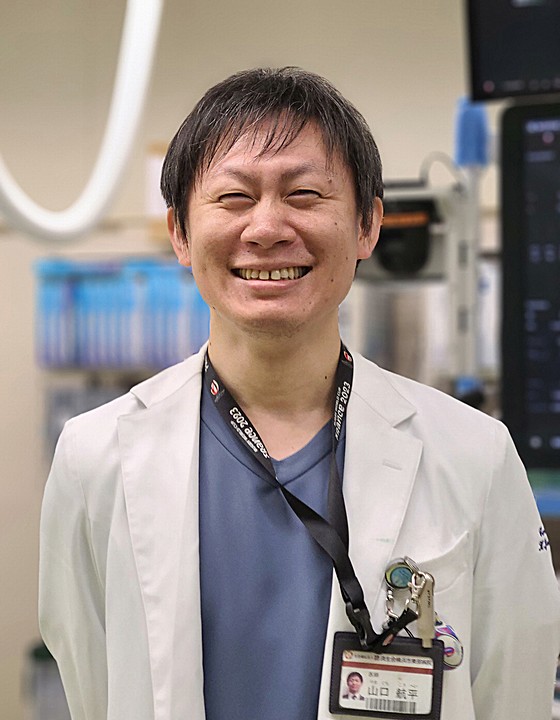
内科責任者
循環器内科 医長
山口 航平 やまぐち こうへい
- 外来日
- 月曜 8:30 ~ 11:00
現在弁膜症治療には様々な選択肢があり、「内科か、外科か」ではなく、「内科も、外科も」、そしてそれに関わる診療科と、コメディカルスタッフの連携、すなわち「ハートチーム」の役割が重要とされています。
東部病院弁膜症治療センターでは、このハートチームがそれぞれの患者様に一番適した治療法を検討し、最善の治療結果となるようお手伝いさせていただきます。
弁膜症をはじめとして、心疾患でお困りの患者様、また心疾患が疑われる患者様は、ぜひ東部病院弁膜症治療センターへご相談ください。
- 学会専門医・認定医
- 日本循環器学会 循環器専門医
- 日本内科学会 認定内科医・総合内科専門医
- 日本心血管インターベンション治療学会 心血管カテーテル治療認定医・専門医
- 日本経カテーテル心臓弁治療学会 経カテーテル的大動脈弁留置術(TAVI)実施医・指導医SAPIENシリーズ
- 日本経カテーテル心臓弁治療学会 経カテーテル的大動脈弁留置術(TAVI)実施医・指導医CoreValveシリーズ
- 経皮的僧帽弁接合不全修復術(MitraClip)実施医
- 経皮的左心耳閉鎖システム(WATCHMAN)実施医
- 着脱型自動除細動機(WCD)処方資格
- 日本不整脈心電学会 心電図検定1級
- 日本ACLS協会 ACLS、BLS provider
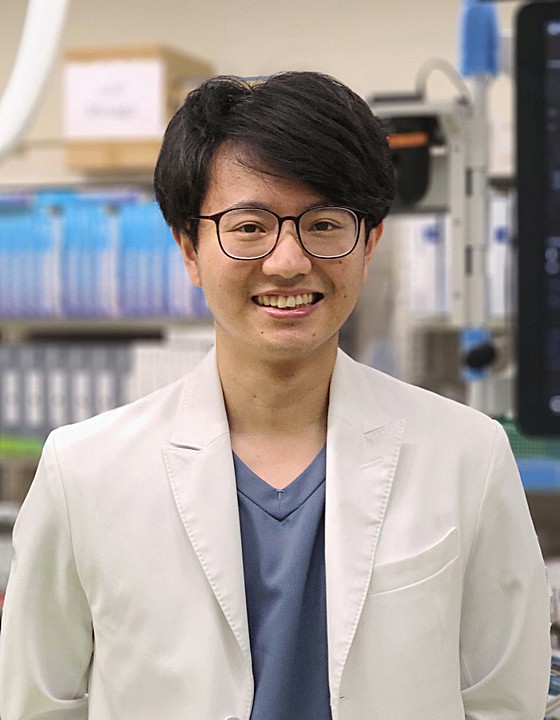
循環器内科 医員
瀬戸長 雄介 せとなが ゆうすけ
- 外来日
- 木曜 8:30 ~ 11:00
- 学会専門医・認定医
- 内科専門医
- 日本心血管インターベンション治療学会心血管カテーテル治療認定医
- JB-POT 日本周術期経食道心エコー認定委員会 日本周術期経食道心エコー(JB-POT)認定医
外来担当医のご紹介
Doctor info.
外科責任者
心臓血管外科 部長
飯田 泰功いいだやすのり
- 外来日
- 火曜 8:30 ~ 11:00
我々は、ハートチームの一員として循環器内科医、麻酔科医、臨床工学技士、手術室スタッフとカンファレンスを行い、「ムリ、ムラ、ムダ」が無く、患者さんが「腑に落ちて」治療を受けてもらえるような治療戦略を立てて参ります。
私は、平素から患者さんを「家族」と思って診療するように心掛けています。家族のためと考えれば、日々の努力、研鑚を怠らず、高いパフォーマンスを発揮できると信じています。
近年、外科手術はますます高齢でかつ脆弱な患者さんを診させていただく機会が増えています。東部病院には一つの治療法だけでなく、選択肢が多くあります。今後もチーム一丸となって患者さんの治療に全力を尽くす所存です。
- 学会専門医・認定医
- 博士(医学)
- 3学会構成心臓血管外科専門医認定機構 心臓血管外科専門医・修練指導医
- 日本外科学会認定医・専門医・指導医
- 日本脈管学会専門医
- 日本血管外科学会血管内治療医
- 浅大腿動脈ステントグラフト実施医
- 胸部・腹部ステントグラフト指導医
- 慶應義塾大学医学部客員講師
- 経カテーテル的大動脈弁置換術(TAVI)SAPIENシリーズ実施医

内科責任者
循環器内科 医長
山口 航平 やまぐち こうへい
- 外来日
- 月曜 8:30 ~ 11:00
現在弁膜症治療には様々な選択肢があり、「内科か、外科か」ではなく、「内科も、外科も」、そしてそれに関わる診療科と、コメディカルスタッフの連携、すなわち「ハートチーム」の役割が重要とされています。
東部病院弁膜症治療センターでは、このハートチームがそれぞれの患者様に一番適した治療法を検討し、最善の治療結果となるようお手伝いさせていただきます。
弁膜症をはじめとして、心疾患でお困りの患者様、また心疾患が疑われる患者様は、ぜひ東部病院弁膜症治療センターへご相談ください。
- 学会専門医・認定医
- 日本内科学会 認定内科医・総合内科専門医
- 日本心血管インターベンション治療学会心血管カテーテル治療認定医・専門医
- 日本経カテーテル心臓弁治療学会日本経カテーテル的大動脈弁留置術(TAVI)実施医・指導医SAPIENシリーズ
- 日本経カテーテル心臓弁治療学会日本経カテーテル的大動脈弁留置術(TAVI)実施医・指導医CoreValveシリーズ
- 経皮的僧帽弁クリップ術(MitraClip)実施医
- 経皮的左心耳閉鎖システム(WATCHMAN)実施医
- 着脱型自動除細動機(WCD)処方資格
- 日本ACLS協会 ACLS、BLS provider

循環器内科 医員
瀬戸長 雄介 せとなが ゆうすけ
- 外来日
- 木曜 8:30 ~ 11:00
- 学会専門医・認定医
- 内科専門医
- 日本心血管インターベンション治療学会心血管カテーテル治療認定医
- JB-POT 日本周術期経食道心エコー認定委員会 日本周術期経食道心エコー(JB-POT)認定医



